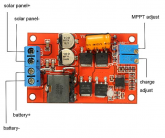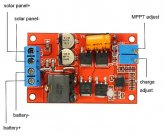TheDroidsYouAreLookingFor
New Member
- Joined
- Dec 30, 2019
- Messages
- 93
If we are going for cheap contest i think ill win. Im budget minded but hopefully someone can beat me.

Pre-made battery, with bms @ 32 volts. As stated in the description people are using the bms and leaving 2 cells out. Pick the good cells and run it in a 12v pack or rewire to make a larger pack if wanted or needed. $5 is about as cheap as it gets and its already in a fireproof container. You will spend more money on the screwdriver to open the box than the battery and nothing else is needed.
Edit: might not ship outside of the US though.

9S 32.85V 2.89ah 94.93WH LI-ION PACK + BMS
CRAZY PRICE! PERFECT TO SALVAGE CELLS AND ACCESSORIES! THESE HAVE NEVER BEEN USED, IN MOST CASES THE CELLS ARE OUT OF BALANCE. WE USED AN ACTIVE BALANCER TO REBALANCE SOME PACKS AND MANY STARTED WORKING AGAIN SO ITS POSSIBLE YOU CAN GET SOME WORKING AGAIN AS IS BUT THESE ARE BETTER TO SALVAGE...
batteryhookup.com
Pre-made battery, with bms @ 32 volts. As stated in the description people are using the bms and leaving 2 cells out. Pick the good cells and run it in a 12v pack or rewire to make a larger pack if wanted or needed. $5 is about as cheap as it gets and its already in a fireproof container. You will spend more money on the screwdriver to open the box than the battery and nothing else is needed.
Edit: might not ship outside of the US though.





